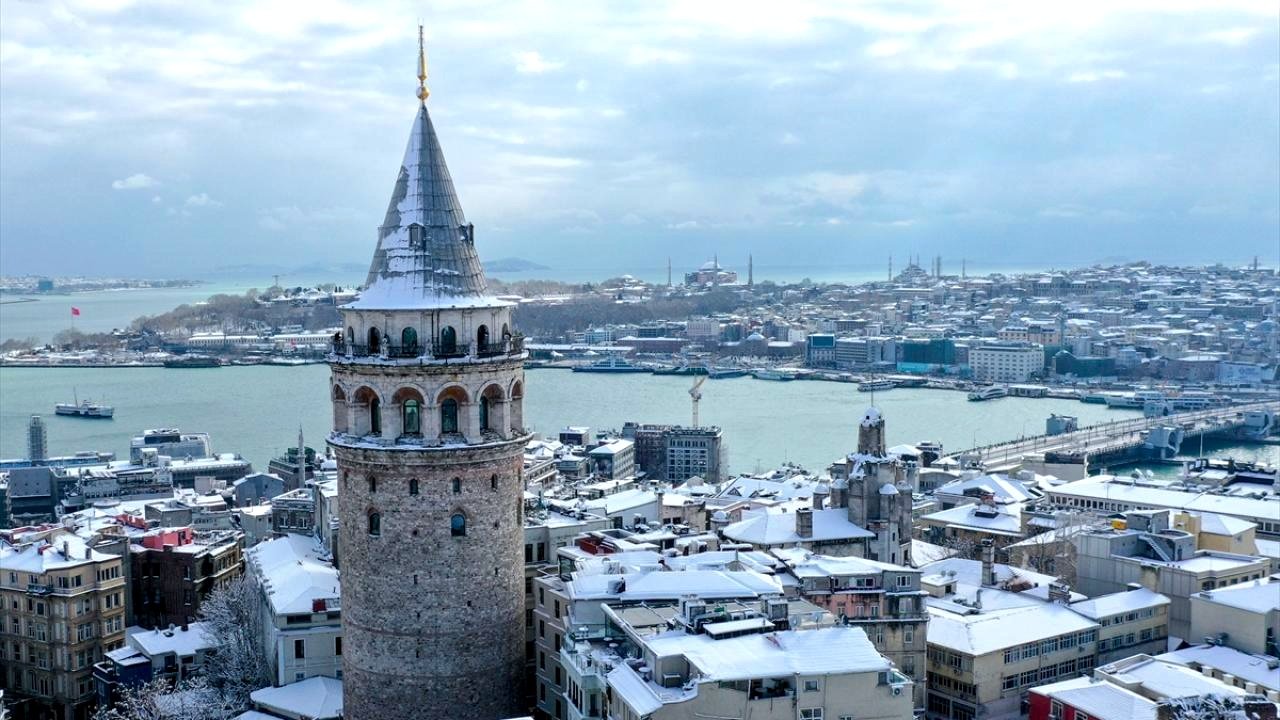Turkey—a land where East meets West, where ancient ruins whisper tales of empires, and where turquoise waters lap against golden shores—is often pegged as a summer haven. Yet, as the world tilts toward winter in 2025, this vibrant nation unveils a quieter, equally enchanting side that’s ripe for discovery. From snow-dusted fairy chimneys in Cappadocia to Istanbul’s cozy tea houses, Turkey in winter offers a blend of affordability, fewer crowds, and unique experiences that summer simply can’t match. Having explored its frost-kissed landscapes myself, I can attest: winter here isn’t just a season—it’s a revelation. As of April 9, 2025, with the winter season (December to March) approaching, this 2,000-word guide dives into why a visit to Turkey this winter is a top idea, spotlighting its benefits, must-see destinations, and practical tips to make your trip unforgettable.
The Allure of Turkey in Winter
Most envision Turkey bathed in summer sun—Antalya’s beaches teeming with sunbathers, Bodrum’s yachts bobbing in the Aegean, or Istanbul’s bazaars buzzing with tourists. But winter flips the script. From December to March, the crowds thin, prices drop, and a serene beauty emerges. Snow blankets Cappadocia’s valleys, thermal springs steam against chilly air in Pamukkale, and Istanbul’s historic sites feel intimately yours. Turkey’s vast geography—spanning Europe and Asia—delivers a kaleidoscope of winter experiences: mild Mediterranean coastlines, crisp mountain air, and frosty eastern plains. Last January, I stood atop Istanbul’s Galata Tower with barely a soul around, the Bosphorus shimmering under a gray sky—it was a moment summer could never offer.
Winter 2025 promises this and more. With global travel rebounding, Turkey’s off-season appeal shines brighter than ever—fewer queues, authentic local encounters, and a chance to see its wonders in a new light. Here’s why it’s a top idea, broken down by benefits and destinations.
Benefit 1: Fewer Crowds, More Connection
Summer in Turkey can feel like a crush—thousands swarm Ephesus’ ruins, hot air balloons in Cappadocia book out months ahead, and Istanbul’s Hagia Sophia teems with selfie sticks. Winter flips this on its head. January and February, the low season, see tourist numbers plummet—hotels sit at 50% capacity, and landmarks like the Blue Mosque or Topkapi Palace become serene sanctuaries. I wandered the Grand Bazaar last winter, haggling with vendors over rugs without elbowing through a throng—it felt like a private tour of history.
This quietude fosters deeper connections. Locals, freed from summer’s hustle, share stories over çay (tea) or invite you to family-run eateries. In Konya, I sipped salep (a warm, orchid-root drink) with a carpet seller who doubled as my impromptu guide to the city’s Sufi heritage. Winter strips away the tourist veneer, revealing Turkey’s soul.
Benefit 2: Budget-Friendly Bliss
Winter slashes costs across the board. Flights from London to Istanbul dip to $100-$150 round-trip (versus $300+ in summer), and hotels offer steep discounts—think $25/night for a boutique stay in Istanbul or $50/night for a Cappadocia cave suite with breakfast. Even excursions—Bosphorus cruises, balloon rides—drop prices to lure off-season visitors. Data from Google Hotels shows January-March rates averaging under $100/night nationwide, a bargain compared to July’s $150-$200 peaks.
This affordability extends to food and transport. A bowl of lentil soup and fresh bread costs $2-$3, while long-distance buses—comfy and ubiquitous—run $10-$20 between cities. My 10-day trip last winter, spanning Istanbul, Cappadocia, and Antalya, cost under $800, including flights—a feat impossible in peak season.

Benefit 3: A Winter Wonderland Awaits
Turkey’s diverse climate shines in winter. Coastal spots like Antalya hover at 50-60°F, perfect for exploring without sweating, while inland Cappadocia dips below freezing, draping its surreal rock formations in snow. Eastern cities like Kars turn into icy playgrounds, and ski resorts like Uludağ buzz with affordable winter sports. This variety means you can tailor your trip—culture, nature, or adventure—without battling summer’s heat or crowds.
Top Destinations to Visit in Winter 2025
Turkey’s winter charms span its regions. Here are the must-see spots for 2025, each offering unique draws.
Istanbul: The Cultural Capital Unplugged
Winter strips Istanbul bare, revealing its raw beauty. The city’s 15 million residents carry on as tourists fade, leaving landmarks like Hagia Sophia, Blue Mosque, and Basilica Cistern blissfully quiet. I explored the latter’s dripping columns with just a handful of others—eerie and intimate. Average highs of 45-50°F and occasional snow dust the Bosphorus, making a ferry ride ($1) a cozy, scenic treat. Warm up in a hammam—Kılıç Ali Paşa’s 16th-century bathhouse ($50) is a steamy escape—or sip boza (a fermented millet drink) in Balat’s colorful streets. Winter events like the Greek Orthodox Epiphany (January 6) add cultural flair, with divers plunging into the Bosphorus for crosses.
Cappadocia: A Snowy Fairy Tale
Cappadocia’s lunar landscapes—fairy chimneys, underground cities—turn magical under snow. Hot air balloons ($100-$150, cheaper than summer’s $200+) soar over white valleys, a bucket-list sight I ticked off last February. Göreme’s open-air museum, with its rock-hewn churches, feels otherworldly in the quiet, and cave hotels (from $40/night) offer toasty retreats. Nearby Erciyes Ski Resort, a 2-hour drive, adds affordable skiing ($20/day). With 0-30°F highs, pack layers—but the payoff is a Cappadocia few see.
Antalya: Mild Mediterranean Bliss
Antalya’s Turkish Riviera shrugs off winter with 55-65°F days, ideal for exploring Roman ruins like Hadrian’s Gate or hiking the Lycian Way. Beaches empty out, letting you stroll Lara or Konyaaltı in peace. I savored seafood by the Old Harbour ($10/meal), the sea breeze crisp but gentle. Nearby Pamukkale’s thermal pools steam at 95°F year-round—wading through them in February, with snow on the terraces, was surreal. Rates drop to $50-$80/night for seafront stays, a fraction of summer’s cost.
Bursa and Uludağ: Skiing and History
Bursa, a 2-hour ferry from Istanbul, blends Ottoman heritage with winter sports. The Grand Mosque and thermal baths (try Çekirge’s mineral springs, $5-$10) warm the soul, while Uludağ’s ski slopes—20 minutes up by cable car—offer runs for all levels ($25/day with rentals). I skied here last winter, the Marmara Sea glinting below—a thrill summer can’t touch. Chalets start at $60/night, or stay in Bursa for less.
Kars and Ani: Eastern Mystique
In Turkey’s far east, Kars freezes at 5-20°F, its Russian-influenced architecture stark against snowy plains. The nearby Ani ruins—medieval Armenian churches dubbed the “City of 1,001 Churches”—are hauntingly beautiful in winter, crowd-free. Lake Çıldır, 40 minutes away, freezes solid—locals fish through ice holes, a scene I watched in awe. The Doğu Ekspresi train from Ankara ($20, 24 hours) is a scenic, budget-friendly ride to this remote gem.
Unique Winter Experiences
Winter unlocks activities summer skips. Skiing at Uludağ or Palandöken rivals Europe’s resorts at half the price. Cappadocia’s balloons glide over snow—a rarer, cheaper thrill. Pamukkale’s hot springs soothe in the chill, and Istanbul’s hammams steam away the cold. In Konya, catch a Whirling Dervishes ceremony (Saturdays, $10)—less crowded than summer. Food shifts too—warm up with kış çorbası (winter soup) or hünkar beğendi (eggplant puree with meat), both under $5 at local spots.
Practical Tips for Winter 2025
- Weather Prep: Coastal areas (Antalya, Izmir) hit 50-60°F, mild and rainy—pack a waterproof jacket. Inland (Cappadocia, Kars) drops to 0-30°F—bring thermals, gloves, and boots. Istanbul’s 45-50°F feels colder with wind—scarves are key.
- Getting There: Flights to Istanbul from the U.S. ($500-$700) or Europe ($100-$200) are cheapest January-February. Buses (e.g., Kamil Koç, $10-$20) or trains (Doğu Ekspresi) link cities affordably.
- Timing: December sparkles with holiday lights; January-February are quietest and cheapest. March warms up, easing outdoor exploration.
- Safety: Turkey’s tourist areas are safe as of April 2025—check gov.uk for updates. Avoid protest zones in Istanbul.
- Packing: Layers, waterproof shoes, and a universal adapter (Type F). Cash (Turkish Lira) rules small vendors—ATMs are widespread.
- Booking: Reserve hotels and balloons 1-2 months ahead via Booking.com or local operators—last-minute deals abound in winter.
Why 2025 Specifically?
Winter 2025 aligns with Turkey’s post-pandemic tourism boom—57 million visited in 2023, per government stats, and 2025 projections soar higher. Infrastructure’s polished, from Istanbul’s new airport to restored sites like Kılıç Ali Paşa. Yet winter keeps it uncrowded. Inflation has softened, making the lira traveler-friendly—your dollars stretch further. Plus, with climate shifts, Turkey’s mild coastal winters feel like a steal compared to Europe’s deep freeze.

The Verdict: A Winter Worth Chasing
A visit to Turkey in winter 2025 isn’t just a trip—it’s a coup. You’ll dodge summer’s heat and hordes, save a bundle, and uncover a side of Turkey that’s raw, real, and ravishing. My mornings sipping çay in Istanbul, afternoons skiing Uludağ, and evenings soaking in Pamukkale’s pools proved it: winter here is a top idea. From Cappadocia’s snowy vistas to Antalya’s gentle sun, Turkey delivers a mosaic of experiences that linger long after the frost melts. So, grab your scarf, book that flight, and let Turkey’s winter wonders steal your heart. Where will your journey start?


